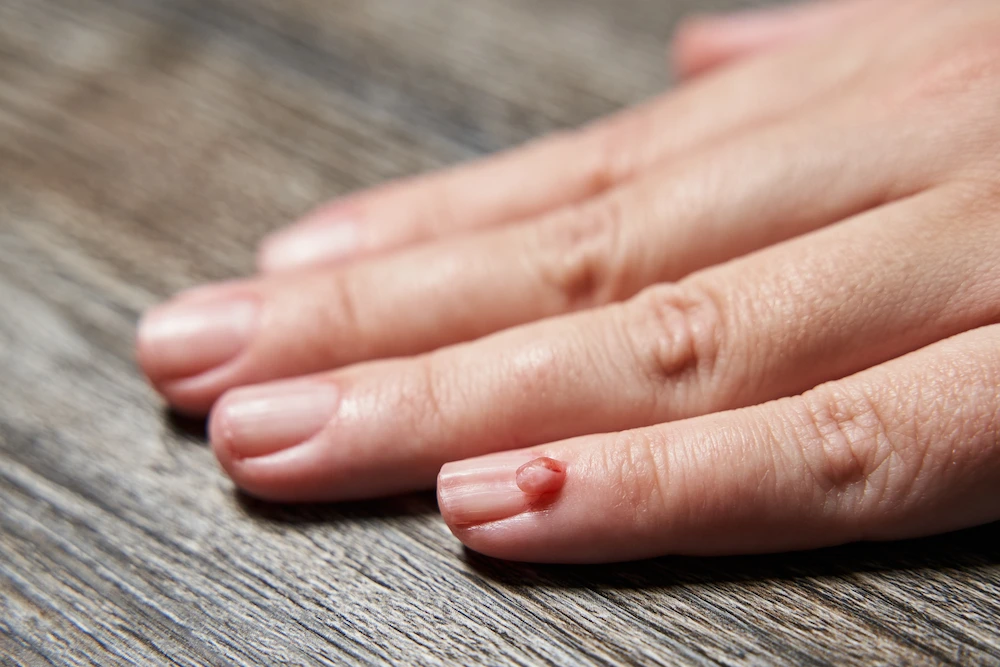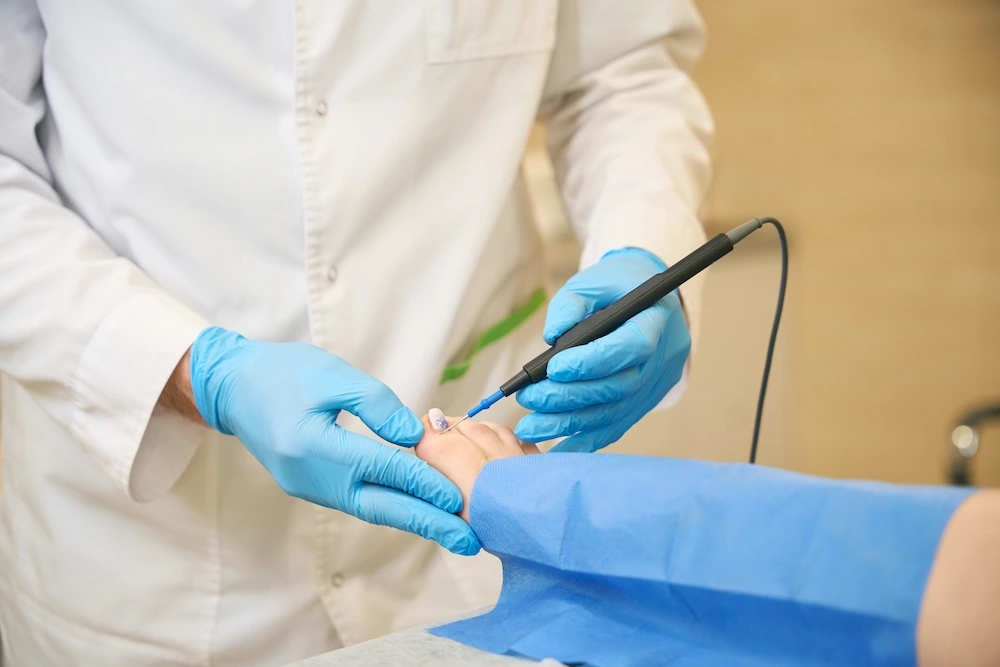Periungual Warts: Identification, Treatment, and Prevention

Warts, those small, rough growths on the skin, can be a nuisance, especially when they appear in inconvenient or sensitive areas. Periungual warts, which develop around the fingernails or toenails, are a common type of wart that can be particularly bothersome.
If you’re experiencing periungual warts, this article will provide you with a comprehensive understanding of their causes, symptoms, treatment options, and preventive measures. We’ll also discuss when it’s important to seek professional medical advice from a primary care doctor in Miami.
What are Periungual Warts?
Periungual warts are non-cancerous skin growths caused by the human papillomavirus (HPV). They typically appear as rough, cauliflower-like bumps around the fingernails or toenails. These warts can be painful, unsightly, and sometimes interfere with daily activities.
Causes of Periungual Warts
Periungual warts are caused by HPV infection, which can enter the skin through tiny cuts or breaks around the nails. Common risk factors include:
- Nail biting or picking at hangnails: These habits can create entry points for the virus.
- Frequent manicures or pedicures: Tools used in salons can sometimes spread the virus if they’re not properly sterilized.
- Weakened immune system: People with weakened immune systems are more susceptible to HPV infection.
Do Warts Bleed?
Yes, warts, including periungual warts, can bleed if they are scratched, bumped, or irritated. However, bleeding doesn’t necessarily mean the wart is dead or going away.
Wart Under Fingernail: A Challenging Location
Warts that grow under the fingernail can be particularly challenging to treat, as they are less accessible to topical medications.

Periungual Warts Treatment: Options for Removal
Several treatment options are available for periungual warts:
- Topical Medications: Salicylic acid or other topical medications can help peel away the wart.
- Cryotherapy: Freezing the wart with liquid nitrogen.
- Laser Therapy: Using a laser to destroy the wart tissue.
- Surgical Removal: In some cases, surgical removal might be necessary.
Primary Care Doctor and Skin Health
If you’re concerned about periungual warts or any other skin concerns, consult a primary care doctor in Miami. They can:
- Evaluate your symptoms and medical history.
- Perform a physical exam to assess the wart.
- Recommend appropriate treatment options or refer you to a dermatologist.
Key Takeaways:
- Periungual warts are caused by HPV infection and can be painful or unsightly.
- Treatment options include topical medications, cryotherapy, laser therapy, and surgical removal.
- If you have concerns about periungual warts, consult a primary care doctor in Miami.
Remember, this article is intended for informational purposes only and should not be considered a substitute for professional medical advice. If you have any concerns about your health or are experiencing warts, consult a qualified healthcare professional.
FAQs: Periungual Warts
- Are periungual warts contagious?
Yes, periungual warts are contagious and can spread through direct contact with the wart or contaminated surfaces. Avoid touching your warts or picking at them, and wash your hands thoroughly after touching them. - Can I prevent periungual warts?
You can reduce your risk by:- Avoiding nail biting or picking at hangnails
- Keeping your hands and feet clean and dry
- Wearing shoes in public areas like locker rooms or pools
- Avoiding sharing personal items like nail clippers or towels
- How can I tell the difference between a periungual wart and a common wart?
Periungual warts specifically occur around the nails, while common warts can appear anywhere on the body. Both types are typically rough, skin-colored bumps, but periungual warts might cause more discomfort or interfere with nail growth. - What should I do if my wart starts bleeding?
Minor bleeding from a wart is usually not a cause for concern. Apply pressure to stop the bleeding and clean the area with soap and water. However, if the bleeding is persistent or heavy, or if the wart shows signs of infection, consult a doctor. - I’ve tried over-the-counter wart treatments, but my periungual wart isn’t going away. What should I do? If home treatments aren’t effective, consult a primary care doctor or dermatologist in Miami. They can recommend other treatment options, such as cryotherapy, laser therapy, or surgical removal.
Contact Us
Hiriart & Lopez MD, LLC
9950 SW 107th Ave STE 101,
Miami, FL 33176
305-274-8779
Phone: (305) 274-8779
Fax: (305) 274-0646
OPENING HOURS
Monday 7:30 AM–4:30 PM
Tuesday 7:30 AM–4:30 PM
Wednesday 7:30 AM–4:30 PM
Thursday 7:30 AM–4:30 PM
Friday 7:30–11 AM
Saturday Closed
Sunday Closed
OFFICE LOCATION
Periungual Warts: Identification, Treatment, and Prevention

Warts, those small, rough growths on the skin, can be a nuisance, especially when they appear in inconvenient or sensitive areas. Periungual warts, which develop around the fingernails or toenails, are a common type of wart that can be particularly bothersome.
If you’re experiencing periungual warts, this article will provide you with a comprehensive understanding of their causes, symptoms, treatment options, and preventive measures. We’ll also discuss when it’s important to seek professional medical advice from a primary care doctor in Miami.
What are Periungual Warts?
Periungual warts are non-cancerous skin growths caused by the human papillomavirus (HPV). They typically appear as rough, cauliflower-like bumps around the fingernails or toenails. These warts can be painful, unsightly, and sometimes interfere with daily activities.
Causes of Periungual Warts
Periungual warts are caused by HPV infection, which can enter the skin through tiny cuts or breaks around the nails. Common risk factors include:
- Nail biting or picking at hangnails: These habits can create entry points for the virus.
- Frequent manicures or pedicures: Tools used in salons can sometimes spread the virus if they’re not properly sterilized.
- Weakened immune system: People with weakened immune systems are more susceptible to HPV infection.
Do Warts Bleed?
Yes, warts, including periungual warts, can bleed if they are scratched, bumped, or irritated. However, bleeding doesn’t necessarily mean the wart is dead or going away.
Wart Under Fingernail: A Challenging Location
Warts that grow under the fingernail can be particularly challenging to treat, as they are less accessible to topical medications.

Periungual Warts Treatment: Options for Removal
Several treatment options are available for periungual warts:
- Topical Medications: Salicylic acid or other topical medications can help peel away the wart.
- Cryotherapy: Freezing the wart with liquid nitrogen.
- Laser Therapy: Using a laser to destroy the wart tissue.
- Surgical Removal: In some cases, surgical removal might be necessary.
Primary Care Doctor and Skin Health
If you’re concerned about periungual warts or any other skin concerns, consult a primary care doctor in Miami. They can:
- Evaluate your symptoms and medical history.
- Perform a physical exam to assess the wart.
- Recommend appropriate treatment options or refer you to a dermatologist.
Key Takeaways:
- Periungual warts are caused by HPV infection and can be painful or unsightly.
- Treatment options include topical medications, cryotherapy, laser therapy, and surgical removal.
- If you have concerns about periungual warts, consult a primary care doctor in Miami.
Remember, this article is intended for informational purposes only and should not be considered a substitute for professional medical advice. If you have any concerns about your health or are experiencing warts, consult a qualified healthcare professional.
FAQs: Periungual Warts
- Are periungual warts contagious?
Yes, periungual warts are contagious and can spread through direct contact with the wart or contaminated surfaces. Avoid touching your warts or picking at them, and wash your hands thoroughly after touching them. - Can I prevent periungual warts?
You can reduce your risk by:- Avoiding nail biting or picking at hangnails
- Keeping your hands and feet clean and dry
- Wearing shoes in public areas like locker rooms or pools
- Avoiding sharing personal items like nail clippers or towels
- How can I tell the difference between a periungual wart and a common wart?
Periungual warts specifically occur around the nails, while common warts can appear anywhere on the body. Both types are typically rough, skin-colored bumps, but periungual warts might cause more discomfort or interfere with nail growth. - What should I do if my wart starts bleeding?
Minor bleeding from a wart is usually not a cause for concern. Apply pressure to stop the bleeding and clean the area with soap and water. However, if the bleeding is persistent or heavy, or if the wart shows signs of infection, consult a doctor. - I’ve tried over-the-counter wart treatments, but my periungual wart isn’t going away. What should I do? If home treatments aren’t effective, consult a primary care doctor or dermatologist in Miami. They can recommend other treatment options, such as cryotherapy, laser therapy, or surgical removal.
Contact Us
Hiriart & Lopez MD, LLC
9950 SW 107th Ave STE 101,
Miami, FL 33176
305-274-8779
Phone: (305) 274-8779
Fax: (305) 274-0646
OPENING HOURS
Monday 7:30 AM–4:30 PM
Tuesday 7:30 AM–4:30 PM
Wednesday 7:30 AM–4:30 PM
Thursday 7:30 AM–4:30 PM
Friday 7:30–11 AM
Saturday Closed
Sunday Closed

